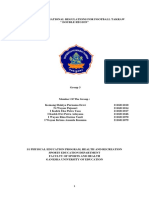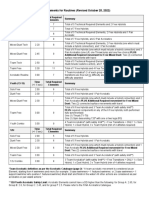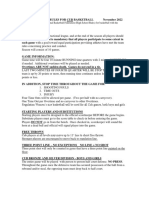0% found this document useful (0 votes)
248 views5 pagesSepak-Takraw 123
The document provides details about the history, rules, and terminology of sepak takraw, a Southeast Asian sport similar to volleyball. It originated in Thailand in the early 1740s and involves kicking a rattan ball over a net. Key rules include using only feet, knees, chest and head to touch the ball, and playing on a badminton-sized court with 3 players per team. Scoring and common terms like "feeder," "killer," and "formations" are also defined.
Uploaded by
Kevin AliasasCopyright
© © All Rights Reserved
We take content rights seriously. If you suspect this is your content, claim it here.
Available Formats
Download as DOCX, PDF, TXT or read online on Scribd
0% found this document useful (0 votes)
248 views5 pagesSepak-Takraw 123
The document provides details about the history, rules, and terminology of sepak takraw, a Southeast Asian sport similar to volleyball. It originated in Thailand in the early 1740s and involves kicking a rattan ball over a net. Key rules include using only feet, knees, chest and head to touch the ball, and playing on a badminton-sized court with 3 players per team. Scoring and common terms like "feeder," "killer," and "formations" are also defined.
Uploaded by
Kevin AliasasCopyright
© © All Rights Reserved
We take content rights seriously. If you suspect this is your content, claim it here.
Available Formats
Download as DOCX, PDF, TXT or read online on Scribd
/ 5






























































































